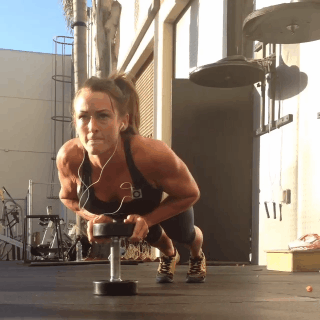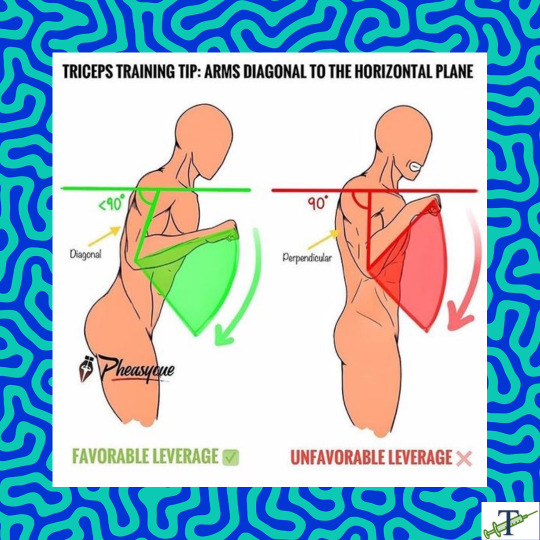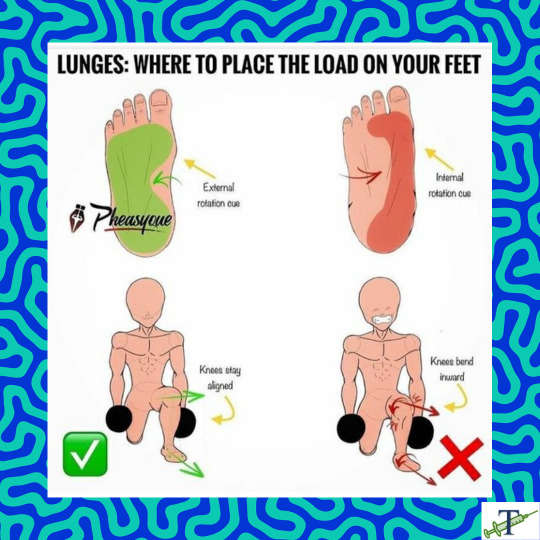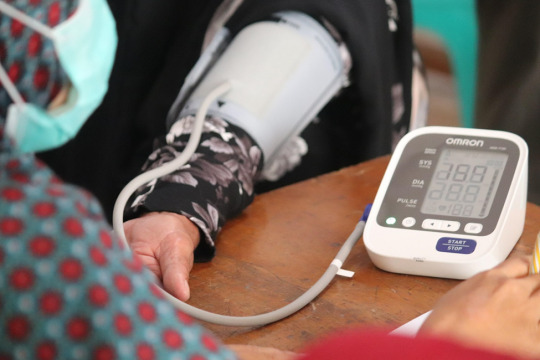#fitness tips
Text

Strength is not just measured in weights lifted, but in the resilience of the spirit, the commitment to self-improvement, and the unwavering dedication to one's own well-being.
#fitness tips#fitness#fitnesslifestyle#fitnessmotivation#workout#gym#women fitness#fitnessguide#weight loss#yoga#women#fitwomen#fit girls#beautiful women#fitness model#fitness beauty#fitgirls#girls with abs#female bodybuilder#muscle girls
541 notes
·
View notes
Text
Muscular girl (fbb art)
🐣I need your support on patreon (18+)🐤

You can support me🐥donate via PayPal, even a small amount of $1 will help me keep making fan art
#muscle women#girls who lift#musclegirl#sexy muscle#fit woman#sexy abs#fit#crossfit girls#weight lifting#crossfit#sports bra#six pac abs#fitness tips#squats#powerlifting#workoutmotivation#quads#lats#huge muscle#roided muscle#female bodybuilder
275 notes
·
View notes
Text
Question:
YouTube used to have motivating fitness videos.... How do I find them??
I need something to watch at work to help myself. 😩

#youtube#videos#healthy lifestyle#getting healthy#losing weight#healthy eating#fitblr#healthy habits#operation lose this gut#weight loss#operationlosethisgut#weight loss journey#active fitblr#fit motivation#fitness motivation#planet fitness#fitness tips#health and fitness#fitness#fitness goals#call for help#help needed#weightloss diet#diet help#diet plan#dieting#diet#weight loss diet#stay motivated#gym motivation
157 notes
·
View notes
Photo


the first step to getting fit is surrendering to looking ridiculous
316 notes
·
View notes
Text
Hot Abs & Core Workout In Bikini
For more detail visit our page "fitfusionhub18"
#fitness#beauty#fit beauty#fit woman#workout#fit model#beautiful#beautiful women#fitbody#fit girls#bikini goddess#bikini beauty#bikini babe#bikni girls#fitness beauty#fitness model#fitness tips#fitness motivation#fitness goals#slim and sexy#sexy abs#gorgeous#legs
74 notes
·
View notes
Photo



Fitness Friday
Proper form = No injury
#Fitness Friday#sensible-tips#FTM#F2M#transmasculine#transmasc#trans man#transgender man#genderqueer#genderfluid#bigender#agender#non binary#fitness tips#FTM workout#FTM fitness#workout form#proper workout form#how-to
127 notes
·
View notes
Text




Workout goals 🖤
#fit black girls#pilatesworkout#pilates princess#fitness#healthy#fitness tips#fitness trainer#gym motivation#gym rat#gymlife#gymmotivation#gymbabe#workout#gym life#working out#workout tips#personal trainer#my post#my photos#my pics#gym body#cross fit#crossfit#fit girls#black fitspiration#sports#fitmom#fit model#fit mom#sporty
44 notes
·
View notes
Text
How you can motivate yourself to lose weight?
Motivating oneself to lose weight can be a challenging task, but it is definitely achievable. Here are some tips that may help:
Set realistic goals: Make sure your weight loss goals are achievable and realistic. Set small goals that can be easily accomplished, such as losing 1-2 pounds a week.
Create a plan: Create a plan that includes a healthy diet and regular exercise routine. Make a schedule and stick to it.
Find a support system: Find friends, family members, or a support group that can encourage and motivate you throughout your weight loss journey.
Reward yourself: Set up rewards for achieving your goals, such as buying new clothes, taking a vacation, or treating yourself to a massage.
Visualize your success: Visualize yourself achieving your weight loss goals and imagine how great you will feel once you accomplish them.
Keep a record: Keep track of your progress by recording your weight and measurements regularly. This will help you see the progress you have made and motivate you to continue.
Remember, losing weight takes time and effort, but with patience and determination, it is definitely achievable.
#lose weight#how to lose weight#best way to lose weight#i wanna lose weight#need to lose more weight#i need to lose so much weight#weight loss tips#fitness motivation#lose weight motivation#fitblr#fitness tips#fitspo#trending post#fitness#weight loss#weight loss motivation#healthblr#healthylifestyle#weight loss goals#losing weight
82 notes
·
View notes
Text
What are some easy and effective exercises for weight loss?

1. Cardio
Cardio is obviously the first exercise for weight loss and is great if you’re not currently doing any kind of cardio already. There are many different types of cardio, including walking, running, swimming, cycling, and others. If you want to lose weight, make sure you keep your heart rate going at about 70 percent of your maximum heart rate. When you do cardio, try to go for 30 minutes at a time three times per week and cut down on high calorie foods throughout the day.
2. Strength Training
Strength training is one of the best ways to burn fat and build muscle mass while working out. While we often think of lifting weights as being only for men, women benefit just as much from lifting weights as they do men. Women should lift heavier than men, and aim for anywhere between 8 and 12 repetitions per set. You don’t have to lift heavy weights either; using bodyweight is fine. You can start off with simple pushups and planks, then move onto squats and lunges. You can even use dumbbells or kettle bells if you prefer. All these exercises should be done two or three times per week.
3. Plyometric Push-Ups
Plyometrics is an awesome way to get leaner fast. These workouts work your entire upper body and lower body simultaneously, meaning you’re able to target specific muscles and get results faster. Start with five sets of 10 reps each. Do these two or three times per month.
4. Full Body Jumping Rope Workout
Jumping rope burns calories and builds stamina. Try jumping rope twice a week with a total minimum of 20 minutes of jumping. Use the technique where you skip rope in front of your feet and jump over both ropes. Make sure to hold yourself steady and perform jumps of 30 seconds or longer.
5. Yoga
Yoga is great for building flexibility, strength, balance, and endurance. If you really want to increase your strength, yoga is the perfect workout. To add variety to your routine, focus on strengthening your core while performing yoga poses. Practicing yoga can help you become stronger, healthier, and more flexible.
Do You Want Weight Loss Fast : Secret
#loss weight#weight loss#weight loss fast#weight loss exercise#gym#gym workout#fitness gym#fitness#fitness tips#motivation#gut health#health#healthy life#belly fat loss#belly fat#workout#cardio#yoga
159 notes
·
View notes
Text
Fuck man I need to get this body ripped. Twink ass fucking body, don’t get me wrong we love a twink but am a TWUNK GODDAMNIT. System problems man, I don’t look like the body does. Anyone got good arm and ab workouts for someone over a year on T? We already bike and swim a lot, but we need to build up some muscle here.
9 notes
·
View notes
Text

10 exercises can help you lose weight healthily
Cardiovascular exercises: Cardiovascular exercises are great for losing weight. They include running, cycling, swimming, and brisk walking. Aim for at least 150 minutes of moderate-intensity or 75 minutes of vigorous-intensity cardiovascular exercise per week.
High-Intensity Interval Training (HIIT): HIIT involves short bursts of high-intensity exercise alternated with low-intensity recovery periods. It has been shown to be an effective way to burn calories and lose weight.
Resistance training: Resistance training involves using weights or resistance bands to build muscle. It can help boost your metabolism and burn fat. Aim for two to three resistance training sessions per week.
Yoga: Yoga is a great way to improve flexibility, balance, and strength. It can also help you lose weight by reducing stress levels, improving sleep quality, and increasing mindfulness.
Pilates: Pilates is a low-impact form of exercise that focuses on building core strength and improving flexibility. It can help you lose weight by building muscle, burning calories, and improving posture.
Swimming: Swimming is a low-impact form of exercise that can help you lose weight. It burns a lot of calories and is easy on your joints. Aim for at least 30 minutes of swimming per session.
Walking: Walking is a simple and effective way to lose weight. Aim for at least 30 minutes of brisk walking per day.
Cycling: Cycling is a great way to lose weight and improve cardiovascular health. It can be done indoors on a stationary bike or outdoors on a road bike. Aim for at least 30 minutes of cycling per session.
Dancing: Dancing is a fun way to lose weight. It can burn a lot of calories and improve your coordination and balance. Try joining a dance class or dancing at home to your favorite music.
Jumping rope: Jumping rope is a high-intensity exercise that can help you lose weight. It is also great for improving coordination and cardiovascular health. Aim for at least 10 minutes of jumping rope per day. CLICK HERE NOW.
#lose weight fast#weightloss#healthy diet#diet and nutrition#diet plan#dieting#lose weight#lose belly fat#fat belly#fat loss#weight loss#fat#yoga#exercise#lifehacks#fitness tips#ketodiet
95 notes
·
View notes
Text
Top 11 Habits For a Healthy Lifestyle
Move: Regular exercise keeps bones and muscles strong.
Eat Healthy: Include fruits, veggies, and lean proteins in your diet.
Breakfast: Boost metabolism by having a nutritious breakfast.
Hydrate: Drink plenty of water for overall well-being.
Sleep Well: Prioritize quality sleep.
Limit Processed Foods: Opt for nourishing options.
Exercise Regularly: Stay active.
Reduce Sitting Time: Move throughout the day.
Get Outdoors: Fresh air benefits mind and body.
Practice Mindfulness: Stay present and reduce stress.
Stay Positive: Cultivate a positive mindset.
Remember, these habits contribute to a healthier you! 🌿💪
download my ebook in here
#weight management#health journey#nutrition#healthy food#fitblr#shiv roy#roman roy#health and nutrition#atsv#hobie brown#diet#fitness tips#hearthealth#dieting#gut health#weight loss journey#vitamins#diet plan#wellness#intermittent fasti#fat loss#lose weight fast#wellbeing#fitnessmotivation#i need to lose so much weight#healthylifestyle#self awareness#fitness#healthy weight loss#weight loss diet
9 notes
·
View notes
Text
Muscular girl (fbb art). We need your support on patreon (18+)

Your donation via PayPal will help continue the development of muscular women's art
#muscle women#girls who lift#musclegirl#sexy muscle#fit woman#sexy abs#fit#crossfit girls#weight lifting#crossfit#sports bra#six pac abs#fitness tips#squats#powerlifting#workoutmotivation#quads#lats#huge muscle#roided muscle#female bodybuilder
70 notes
·
View notes
Text
10 Tips to Supercharge Your Fitness Journey! 💪✨

Hey FitFam! 🌈✨ Ready to take your fitness game to the next level? Whether you're a seasoned gym-goer or just dipping your toes into the FitLife waters, these 10 tips will set you on the path to success and make your fitness journey an epic adventure! 💥
Find Your Passion: Don't force yourself into a workout routine you hate. Whether it's dancing, lifting, or hiking, discover what you love and turn it into your fitness sanctuary. The key is to make it enjoyable!
Mix it Up: Avoid workout monotony by incorporating variety into your routine. From HIIT to yoga, switch it up to keep things exciting for both your mind and body.
Set Realistic Goals: Break down your fitness goals into achievable milestones. Celebrate small victories along the way, and remember, progress, not perfection!
Fuel Your Body Right: Nutrition is the unsung hero of fitness. Nourish your body with a balance of protein, healthy fats, and carbs. Hydration is key – drink water like it's your superpower potion! 🌊💧
Listen to Your Body: Rest is just as crucial as the workout itself. Pay attention to your body's signals, and don't hesitate to take a day off when needed. Rest and recovery are essential for growth!
Create a Routine: Consistency is your fitness BFF. Whether it's morning workouts, lunchtime jogs, or evening yoga sessions, establish a routine that fits seamlessly into your lifestyle.
Rock the Playlist: Craft an empowering playlist that fuels your workouts. Music has the power to elevate your mood and push you through the toughest reps. 🎶💪
Get a Workout Buddy: Everything's better with a friend! Grab a workout buddy to share the sweat, laughs, and motivation. It's a game-changer!
Invest in Quality Gear: Treat yourself to comfortable and functional workout gear. Not only does it make you feel like a fitness superhero, but it also enhances your performance.
Embrace the Mind-Body Connection: Fitness is not just about physical strength but also mental well-being. Incorporate mindfulness practices like meditation or deep breathing to find balance and reduce stress.
Remember, your fitness journey is uniquely yours. Embrace the process, celebrate your victories, and enjoy the ride! 🚀💖 Share your tips and tricks with the FitLife community – together, we're unstoppable! 🌟💃🏽
8 notes
·
View notes
Text
Is 140 over 70 a good blood pressure?

In the mind boggling domain of wellbeing and health, understanding the subtleties of essential markers like pulse is fundamental. The Presentation makes way for disentangling the secret behind the numbers, diving into the meaning of keeping a sound circulatory strain level. With a brief outline, it provokes the peruser's interest by featuring the basic job pulse plays in general prosperity.
This segment demystifies the two parts of pulse — systolic and diastolic — and frames the customary reach thought about ordinary. Zeroed in on the focal question, "Is 140 north of 70 a decent pulse?" the Presentation gives a starter knowledge into the mathematical scene that characterizes cardiovascular well-being.
As perusers set out on this useful excursion, they gain clearness on the ramifications of the 140 north of 70 circulatory strain perusing, recognizing ideal levels and possible warnings. The Presentation establishes the vibe for the article as well as underlines the more extensive setting of the pulse as an essential boundary requiring watchfulness.
With a mix of openness and profundity, the Presentation enthralls the crowd, establishing the groundwork for a far reaching investigation of pulse, its understanding, and the essential inquiry of what genuinely comprises a "great" circulatory strain perusing.
Setting out on the perplexing excursion of fathoming pulse, the segment named "Understanding Circulatory strain" fills in as a signal of edification. Inside its smart investigation, perusers dig into the nuanced elements of systolic and diastolic tension, acquiring a significant handle on these fundamental parts that paint the picture of cardiovascular well-being.
This fragment unfurls with accuracy, characterizing the complex dance between the two circulatory strain estimations and their aggregate effect. As the story unfolds, perusers gather the course book definition as well as the present reality ramifications of these mathematical qualities. The segment clarifies the typical pulse range, giving a benchmark against which perusers can measure their own cardiovascular prosperity.
By unwinding the complexities of what comprises a sound pulse perusing, "Understanding Circulatory strain" outfits perusers with the information to perceive the meaning of the frequently examined 140 north of 70 perusing. It overcomes any issues between clinical language and regular comprehension, enabling perusers to explore their well-being process.
Basically, this portion is a compass, directing perusers through the maze of pulse complexities, encouraging a recently discovered appreciation for the fundamental job these numbers play in keeping up with generally speaking well-being and prosperity.
"Deciphering Circulatory strain Readings" welcomes perusers into the core of mathematical investigation, translating the language of wellbeing from the perspective of pulse. This significant area not just analyzes the numbers, outstandingly the 140 north of 70 estimation, yet additionally reveals the complex story they tell about cardiovascular prosperity.
Exploring past the surface, this portion fastidiously separates the parts of circulatory strain readings, unwinding the meaning of raised systolic or diastolic tension. Perusers gain a nuanced comprehension of the potential well-being suggestions, overcoming any issues between simple numbers on a scale and their effect on generally speaking wellbeing.
The account guilefully investigates the context-oriented factors impacting pulse readings, recognizing the complex idea of this physiological measurement. It fills in as an aide, enabling perusers to observe the unobtrusive subtleties in their readings and encouraging a proactive way to deal with cardiovascular well-being.
"Deciphering Circulatory strain Readings" is a compass, that directs perusers through the complexities of mathematical well-being markers. As it unfurls, it not just gives lucidity on the 140 north of 70 perusing yet additionally imparts a feeling of strengthening, empowering perusers to assume command over their wellbeing story by translating the imperative messages implanted in their pulse numbers.
"Wellbeing Dangers Related with Hypertension" dives into the significant repercussions that raised circulatory strain can use on the body's many-sided woven artwork. This segment fills in as an obvious update that behind the mathematical façade of circulatory strain readings lies an expected fountain of well-being challenges.
As the story unfolds, perusers are directed through a thorough investigation of the potential wellbeing chances fastened to uncontrolled hypertension. From the cardiovascular framework to essential organs, the part clarifies the cascading type of influence that drawn-out hypertension can set off. It disentangles the mind-boggling associations between hypertension and conditions like coronary illness, stroke, and kidney brokenness, portraying the stakes engaged with keeping up with ideal circulatory strain levels.

Past the actual domain, the portion additionally addresses the more extensive effect on personal satisfaction, underscoring the significance of preplanned measures in moderating these dangers. Through a blend of clinical bits of knowledge and viable ramifications, this segment changes unique well-being ideas into unmistakable real factors, encouraging an increased familiarity with the significant impact circulatory strain applies on general prosperity.
"Wellbeing Dangers Related with Hypertension" isn't just a useful example; it fills in as a source of inspiration, convincing perusers to focus on their cardiovascular well-being and find proactive ways to moderate the potential dangers hiding underneath the outer layer of apparently harmless pulse readings.
"Is 140 North of 70 Thought about Ordinary?" explores the complexities of circulatory strain benchmarks, disentangling the secrets encompassing this mathematical preview of cardiovascular wellbeing. In this section, perusers set out on an excursion of self-revelation, investigating the scarcely discernible difference between what is considered typical and what might warrant nearer examination.
The account cautiously takes apart the particular pulse perusing of 140 north of 70, offering experiences into how it lines up with laid out rules. It digs into the variables impacting the impression of "typical," taking into account individual varieties and customized well-being appraisals. By giving a setting to this particular circulatory strain perusing, the segment enables perusers to decipher their measurements, cultivating a feeling of organization in observing their cardiovascular prosperity.
This investigation stretches out past simple mathematical examination, empowering perusers to address and comprehend the boundaries that characterize business as usual in the domain of circulatory strain. With a mix of clinical skill and down to earth importance, the fragment furnishes people with the information to explore their own wellbeing scene, perceiving the subtleties that add to the more extensive inquiry: What genuinely comprises typical circulatory strain?
"Is 140 More than 70 Thought about Typical?" isn't simply a question; it's a challenge to disentangle the intricacies of pulse measurements, enabling perusers to connect effectively in their well-being process and come to informed conclusions about what is viewed as typical for their one of a kind physiological cosmetics.
"Sound Way of Life Decisions for Circulatory Strain The board" fills in as a compass directing perusers towards a proactive way to deal with cardiovascular prosperity. In this edifying section, the spotlight shifts from numbers on a circulatory strain check to the engaging domain of way-of-life decisions that use significant effects on heart well-being.
This story unfurls with rich embroidery of bits of knowledge, investigating the harmonious connection between diet, exercise, and stress the executives in keeping up with ideal pulse levels. Perusers leave on an excursion through proof put-together exhortation concerning sustenance, finding the groundbreaking capability of healthy dietary decisions in pulse guidelines. The segment likewise advocates for the vital job of customary activity, enlightening how active work can turn into a foundation in the groundwork of heart wellbeing.
Stress, frequently an ignored supporter of hypertension, becomes the overwhelming focus as the story discloses the pressure of the board procedures that stretch out past tried and true way of thinking. From care practices to unwinding methodologies, perusers are furnished with a different tool compartment to explore the intricacies of current life while protecting their cardiovascular well-being.
"Sound Way of Life Decisions for Pulse The Board" is more than an aide; it's a challenge to embrace a comprehensive way to deal with prosperity. By winding around together pragmatic counsel and logical experiences, the part engages perusers to go with informed choices, encouraging a feeling of organization in creating a way of life that oversees pulse as well as develops an establishment for persevering through heart wellbeing.
"Observing and Looking for Proficient Exhortation" fills in as the watchful sentinel in the domain of cardiovascular wellbeing, encouraging perusers to embrace a proactive job in defending their prosperity. In this urgent fragment, the story unfurls as a compass, directing people through the fundamental acts of customary pulse checking and the essential step of looking for proficient direction.
Perusers are urged to become stewards of their well-being by taking on routine circulatory strain checks, offering a guide to figuring out the rhythmic movement of these crucial measurements. The segment explores past simple mathematical translations, accentuating the significance of patterns and examples in circulatory strain readings, enabling people to recognize likely deviations from their standard.

However, this fragment goes past self-observing, upholding the key job of medical services experts in the excursion towards ideal cardiovascular wellbeing. It reveals insight into the subtleties of when to counsel an expert, offering a guide for people to perceive signs that warrant master intercession. By destroying the obstructions to looking for proficient counsel, the story cultivates a feeling of strengthening, changing medical services into a cooperative exertion among people and their medical services suppliers.
"Observing and Looking for Proficient Exhortation" is a source of inspiration, overcoming any barrier between private mindfulness and master direction. It remains as an update that in the ensemble of heart wellbeing, normal checking and ideal counsels fit to make a strong and informed approach towards general prosperity.
#weight loss diet#healthy diet#i wanna lose weight#weight lifting#fitness and exercise#weight loss#fitness tips#healthy living#healthy eating#weight loss program#nutrition#workout#healthy#health & fitness#fitness#fitnessmotivation
7 notes
·
View notes
Text
Daily Core & Upper Body Workout For Women Fitness
#fitness#beauty#fit beauty#fit woman#workout#fit model#beautiful#beautiful women#fitbody#fit girls#wo#women#working out#women who lift#gorgeous women#fitness beauty#fitness model#fitness goals#fitness tips#fitness gym#fitness motivation#fitblr#sexy abs#girls with abs#lower abs#girls abs#slim weist#slim and sexy#slim model#slim waist
45 notes
·
View notes